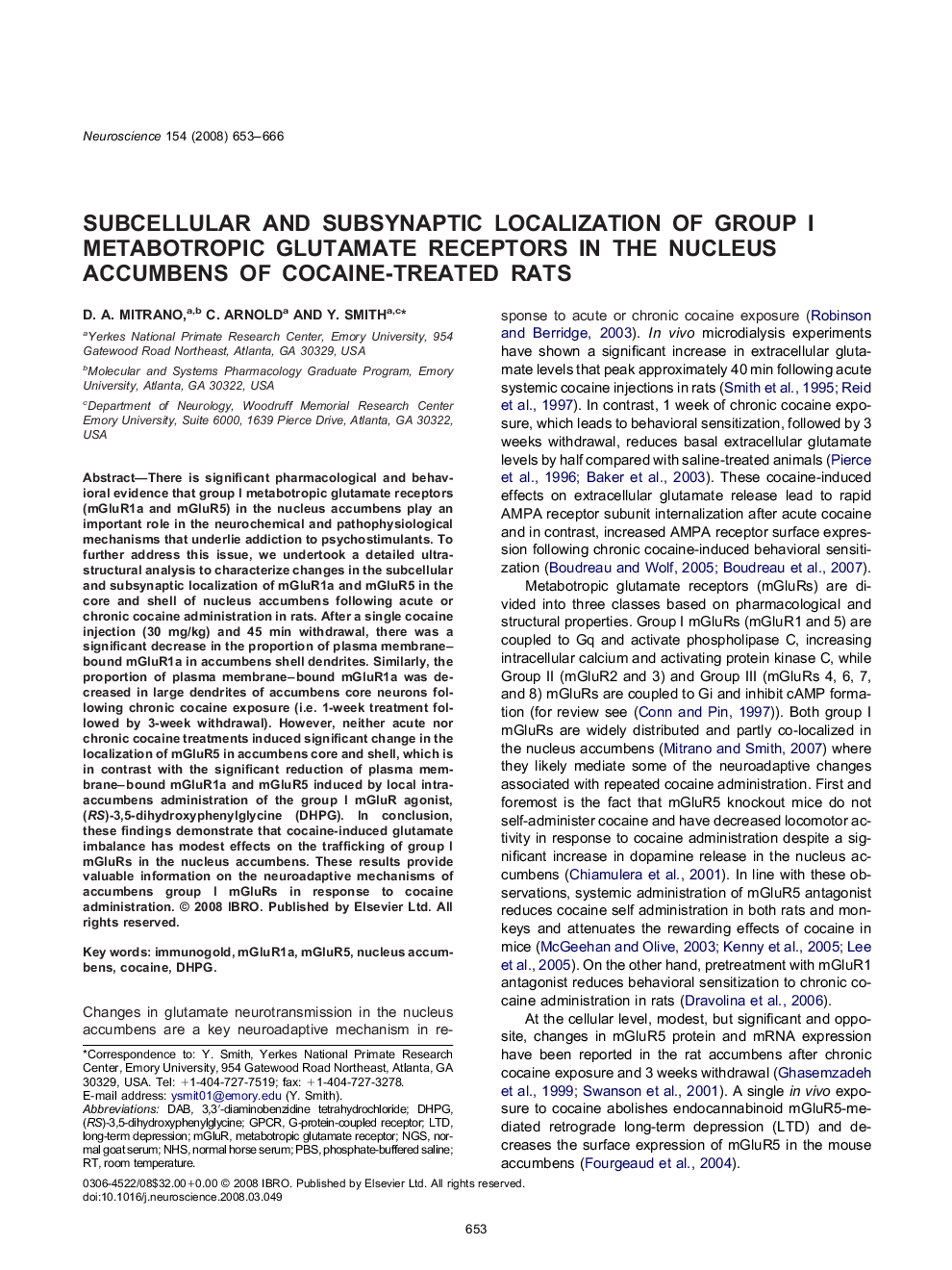| Article ID | Journal | Published Year | Pages | File Type |
|---|---|---|---|---|
| 4341616 | Neuroscience | 2008 | 14 Pages |
There is significant pharmacological and behavioral evidence that group I metabotropic glutamate receptors (mGluR1a and mGluR5) in the nucleus accumbens play an important role in the neurochemical and pathophysiological mechanisms that underlie addiction to psychostimulants. To further address this issue, we undertook a detailed ultrastructural analysis to characterize changes in the subcellular and subsynaptic localization of mGluR1a and mGluR5 in the core and shell of nucleus accumbens following acute or chronic cocaine administration in rats. After a single cocaine injection (30 mg/kg) and 45 min withdrawal, there was a significant decrease in the proportion of plasma membrane–bound mGluR1a in accumbens shell dendrites. Similarly, the proportion of plasma membrane–bound mGluR1a was decreased in large dendrites of accumbens core neurons following chronic cocaine exposure (i.e. 1-week treatment followed by 3-week withdrawal). However, neither acute nor chronic cocaine treatments induced significant change in the localization of mGluR5 in accumbens core and shell, which is in contrast with the significant reduction of plasma membrane–bound mGluR1a and mGluR5 induced by local intra-accumbens administration of the group I mGluR agonist, (RS)-3,5-dihydroxyphenylglycine (DHPG). In conclusion, these findings demonstrate that cocaine-induced glutamate imbalance has modest effects on the trafficking of group I mGluRs in the nucleus accumbens. These results provide valuable information on the neuroadaptive mechanisms of accumbens group I mGluRs in response to cocaine administration.
